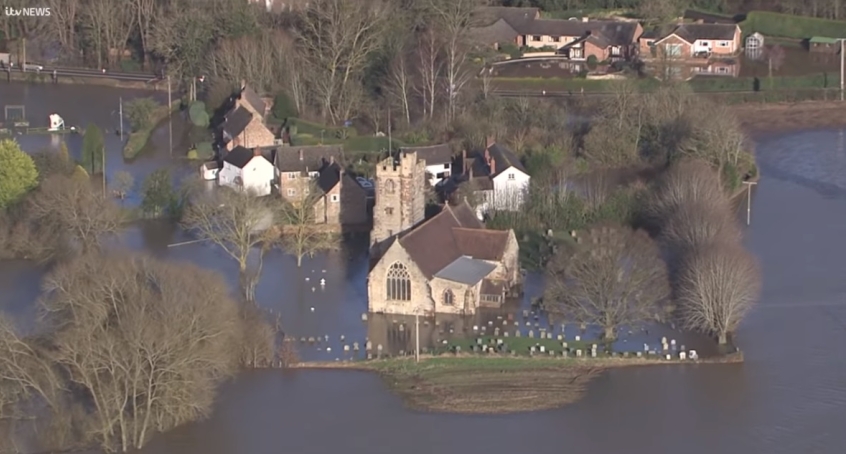
A new Christian Aid report has identified 10 extreme events in 2020 that were all influenced by climate change and caused at least $1.5bn in damage each.
The events detailed in Counting the cost 2020: a year of climate breakdown include Storm Ciara, which hit the UK, Ireland and other European countries in February this year.
The storm brought gusts of 136mph and caused widespread flooding, killing 14 and leaving a trail of damage totalling $2.7bn.
But this sum was surpassed by the cost of floods in China - $32bn - and record-breaking hurricane and fire seasons in the US, which left a $60bn bill.
in Africa, crops in several countries, including Kenya, Ethiopia and Uganda have been ravaged by giant locust swarms believed to be linked to wet conditions brought on as a result of unusual rains fuelled by climate change. The damage caused reached $8.5 billion.
But the Christian Aid report notes that while the financial cost for richer countries tends to be higher because of property prices, the impact on poorer countries can be just as devastating, if not more, even when the bill is smaller.
In South Sudan, the country experienced its worst floods on record, wiping out the year's crops and killing 138 people.
Christian Aid said the extreme events of 2020 highlighted the need for "urgent climate action" to achieve the goal of the Paris Agreement - to keep temperature rises "well below" 2°C, or ideally 1.5°C, compared to pre-industrial levels.
Ahead of the UN climate summit taking place in Glasgow in November 2021, Christian Aid is calling on countries to commit to "bold" new targets.
Dr Kat Kramer, Report author and climate policy lead at Christian Aid, said: "The Covid-19 pandemic has understandably been a major worry this year. For millions of people in vulnerable parts of the world, climate breakdown has compounded this.
"The good news is that, like the vaccine for Covid-19, we do know how to fix the climate crisis. We need to keep fossil fuels in the ground, boost clean energy investment and help those who are suffering on the front line.
"Whether it be floods in Asia, locusts in Africa or storms in Europe and the Americas, climate change has continued to rage in 2020. It is vital that 2021 ushers in a new era of activity to turn this tide.
"With President-elect Biden in the White House, social movements across the world calling for urgent action, post-Covid green recovery investment and a crucial UN climate summit hosted by the UK, there is a major opportunity for countries to put us on a path to a safe future."
Dr Andrew King, Lecturer in Climate Science at the University of Melbourne, Australia, said: "2020 was an extremely challenging year with the effects of severe weather events in many cases exacerbated by the ongoing Covid-19 pandemic.
"Severe floods and tropical cyclones impacted different regions of the world and for several of these events, particularly heatwaves and wildfires, there is evidence that human-caused climate change has contributed to their severity.
"Within this challenging landscape there is an opportunity to change direction and work towards a greener future, so we can limit global warming in line with the Paris Agreement, and avoid some of the most damaging consequences of climate change that we project under continued high greenhouse gas emissions."
The most expensive climate related disasters of 2020, in chronological order:
| Date | Location | Impact | Estimated cost ($US billion) | People killed | Number of people displaced (where available) |
| January | Australia | Bushfires | 5 | 34 | 65K |
| January-June | East Africa | Locust swarms | 8.5 | ||
| February & October | Europe | Windstorms | 5.9 | 30 | |
| May | Bay of Bengal | Cyclone Amphan | 13 | 128 | 4.9m |
| May-November | US, Central America, Caribbean | Hurricanes | 41 | 400+ | 200K+ |
| June-October | China | Floods | 32 | 278 | 3.7m |
| June-October | India | Floods | 10 | 2,067 | 4m |
| July | Japan | Floods | 8.5 | 82 | 3.6m advised to evacuate |
| July-September | Pakistan | Floods | 1.5 | 410 | 68K |
| July-November | West coast US | Fires | 20 | 42 | 500K under evacuation order |













